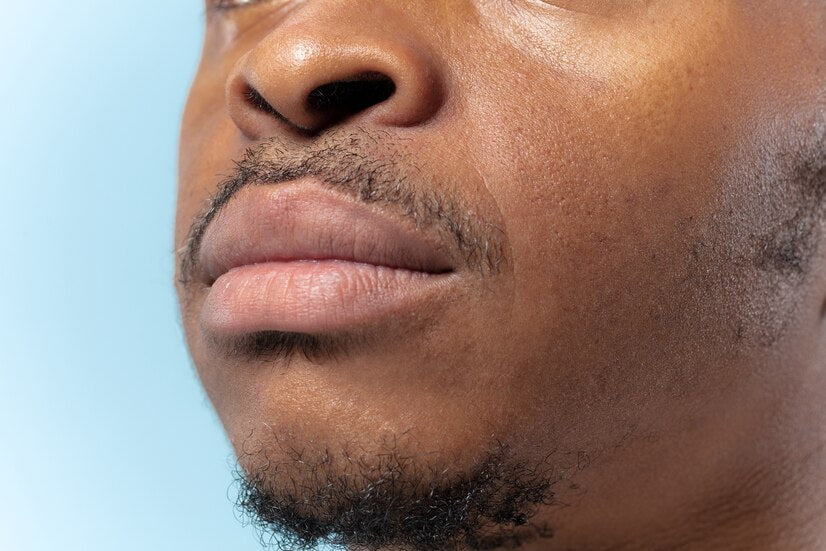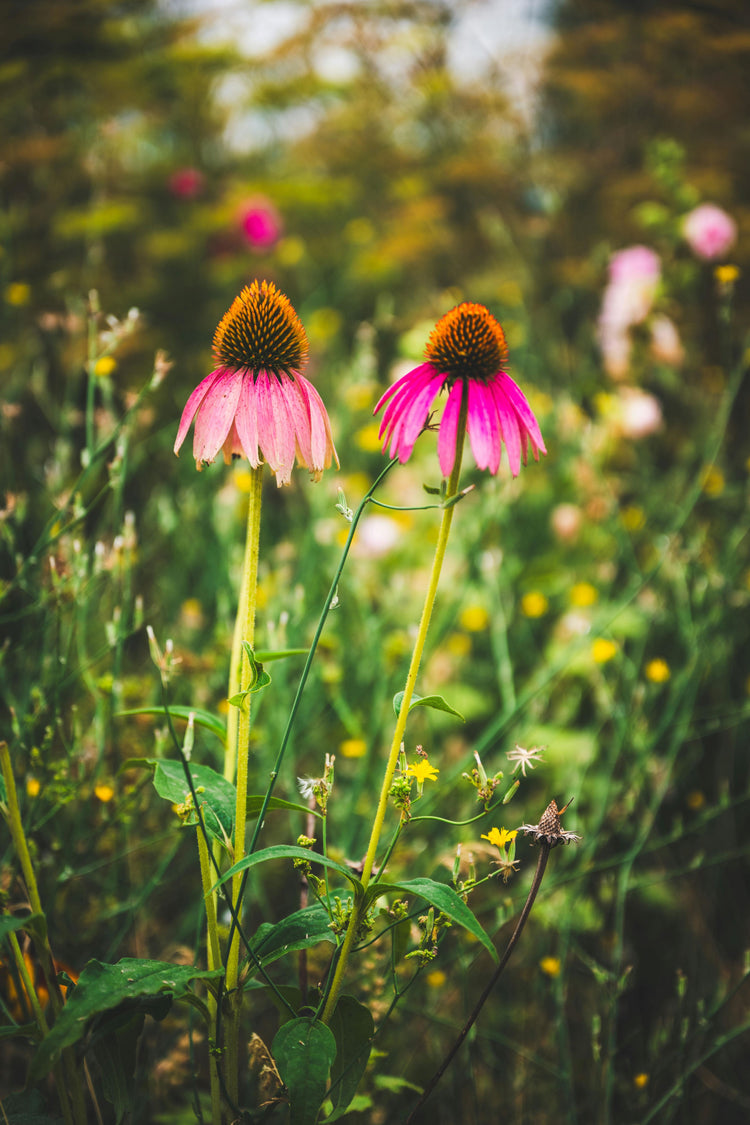Nasolabialinio raukšlės užpildas: nauda, rizika ir procedūra


Nasolabialinės raukšlės kartais vadinamos juoko linijomis ar šypsnio linijomis. Tai yra gilios raukšlės, einančios iš nosies šono iki burnos kampų. Šie raukšlės yra dažnas senėjimo požymis ir priversti žmones pasirodyti vyresni už savo amžių. Nasolabialinės raukšlės, tipiškas senėjimo proceso aspektas, apima kolageno ir elastino praradimą, kuris yra būtini baltymai, kad oda būtų sveika.
Nors kartais tai laikoma brandos simboliu, kai kuriems žmonėms jie atrodo nepatogūs dėl kultūrinės grožio ir jaunatviškumo koncepcijų, todėl jie siekia kosmetikos procedūrų, tokių kaip odos užpildymas.
Odos užpildai dabar populiarėja, nes jie yra veiksmingas būdas sumažinti senėjimo žymenis, tokius kaip nasolabialinės raukšlės. Jie dirba po odos paviršiumi, kad atkurtų laikui bėgant prarastą tūrį, išlygindami raukšles ir suplakdami sustingusias vietas, todėl atsiranda atjauninta veido ir dramatiškai jaunesnio veido veidas ir nereikia operacijos.
Nuo daugiau nei 28,000 Kosmetikos operacijų procedūros buvo atliktos vien JK, remiantis vien 2018 m., Remiantis Baaps, daugelis žmonių mano, kad gylis ir perdėtas buvimas neigiamai veikia jų patrauklumo jausmą ir pasitikėjimą savimi emociniame ir estetiniame lygmenyje. Šios operacijos yra greitos ir neskausmingi būdai, kaip sumažinti matomą senėjimo poveikį, tuo pačiu pagerinant savo išvaizdą ir savivertę.
Dr Magdalena Atta-Motte, kvalifikuotas estetinis specialistas, įsikūręs Londone, pabrėžia šios nechirurginės terapijos revoliucinį pobūdį, pažymėdamas, kad „užpildo gydymas visiškai keičia veido dinamiką, nedelsiant duodant rezultatus su mažai prastovos arba jų nėra“.
A meta analizė Paskelbta NIH parodė, kad audinių užpildai, naudojami gydant nasolabialinius raukšles, leidžia pasiekti patenkinamą ir tvarų pagerėjimą. Visada svarbu apsvarstyti ir naudą, ir riziką, susijusią su procedūra, ir aptarti šias problemas prieš pradedant tęsti procedūrą.
Nasolabialinės raukšlės yra matomos raukšlės ar linijos, einančios nuo nosies šono iki lūpų kampų. Jie paprastai vadinami šypsenomis ar juoko linijomis, nes jos atrodo kaip skliausteliai, kaip aplink mūsų burną ir kartais tęsiasi iki mūsų skruostų.
Nasolabialinės raukšlės tampa labiau pastebimos dėl įvairių priežasčių. Kai kurie iš jų apima:
Nasolabialinis raukšlės užpildas yra kosmetinis gydymas, kurio tikslas - paslėpti nasolabialines raukšles. Procesas apima odos užpildų injekcijas į raukšles, esančias tarp nosies ir lūpų, kad jos būtų iškirptos, taip sumažinant gylį ir sušvelninant išvaizdą.
Šioje procedūroje dažniausiai naudojami užpildai turi hialurono rūgštį (HA). Hialurono rūgštis yra medžiaga, natūraliai randama žmogaus kūne, ji sulaiko vandenį ir prideda tūrio; Todėl jų saugus pritaikymas užpildo raukšlių kontūrus, atkurdamas jaunatvišką pilnatvę.
Atsižvelgiant į naudojamų užpildų tipą ir asmeninius veiksnius, įskaitant metabolizmą, gyvenimo būdą ir odos sveikatą, vidutinė nasolabialinių raukšlių užpildų gyvenimo trukmė svyruoja nuo šešių mėnesių iki dvejų metų. Hialurono rūgšties užpildai, tokie kaip „Juvederm“ ir „Restylane“, dažniausiai naudojami šioje srityje ir paprastai trunka Šeši - dvylika mėnesių. Kitų užpildų rezultatai, pavyzdžiui, Kalcio hidroksilapatitas (pvz., „Radiesse“) gali trukti nuo 18 mėnesių iki dvejų metų. Norint išlaikyti poveikį, dažnai patariama įprastomis priežiūros procedūromis.
Dr Rajiv Grover, buvęs Britanijos estetinių plastinių chirurgų asociacijos (BAAPS) prezidentas, paaiškina, kad „užpildo gydymas akimirksniu papildo prarastą odos tūrį, kartu stimuliuodamas natūralų kolageno gamybą“.
Palyginus su chirurginėmis procedūromis, tokiomis kaip veido pakėlimai ar implantai, matoma, kad nasolabialinis raukšlės užpildas sukelia greitesnį poveikį, nereikalaujant atsigavimo laiko. Tai daro jį tinkamesniu pasirinkimu tiems, kurie greitai ir invaziškai siekia pastebimų pokyčių. Apskritai, atsižvelgiant į situaciją, poveikis trunka nuo šešių mėnesių iki dvejų metų.
Siekdamas puoselėti saugesnę, atsakingesnę estetikos kultūrą, garsus Londono estetikas Dr Tapan Patel perspėja būsimus pacientus apie galimą neigiamą poveikį ir užtikrina, kad jie bus išsamiai informuoti prieš pradedant. Anot jo, nors ir yra mažiau invazinė nei chirurgija, vis dar kyla rizika, įskaitant nenuoseklių rezultatų, mėlynių, edemos, alerginių reakcijų ir infekcijų potencialą.
Daugybė privalumų, kuriuos siūlo „Nasolabial Fold“ užpildai, iliustruoja jų viliojimą:

Pirmasis nasolabialinio raukšlės užpildymo procedūros žingsnis yra konsultacijos prieš gydymą. Čia klientai ir specialistai aptaria tikslus, rūpesčius ir lūkesčius. Išnagrinėti kliento ligos istoriją taip pat yra būtina norint užtikrinti, kad jokie gydymo būdai, tokie kaip alergija, odos užpildai ar tam tikri vaistai, negalėtų trukdyti atlikti procedūrą.
Faktinė injekcijos dalis trunka dar 10–15 minučių, išskyrus pirmąjį numalšinimo laiką, kuris dažnai trunka apie 15 minučių. Visas užsiėmimas dažnai trunka 30 minučių, atsižvelgiant į reikalingą gydymo kiekį. Tai yra pakankamai maža, kad būtų galima pritaikyti daugiausiai džiovos tvarkaraščių, vis dėlto lemia pastebimą estetinį naudą.
Po neinvazinio nasolabialinio raukšlės užpildo operacijos dažnai būna trumpas gijimo laikotarpis. Norint sumažinti mėlynių ar patinimų riziką, patariama atsiriboti nuo karštų, purvų aplinkybių ir fiziškai reikalaujančios veiklos vienai dienai po gydymo. Nors šis šalutinis poveikis yra neįprastas, jie neturėtų būti ignoruojami, kad būtų užtikrinta geriausi įmanomi sveikatos rezultatai, ypač atsižvelgiant į subtilų veido regioną, kuris yra paveiktas.
Paprastai gerai atnaujinti savo įprastą odos priežiūros režimą kitą dieną, tačiau keletą dienų būtinai atsargiai tvarkykite apdorotose vietose, kad išvengtumėte kraštutinių iškraipymų, ir suteikite jiems laiko įsikurti. Tai daro didžiąją dalį šios kosmetikos naujovių pranašumų, kuriuos parodė „Science“, siekiant padėti žmonėms grakščiai senstant išlaikant savo poeziją ir grožį.
Po procedūros pacientai gali būti
Dažniausiai šie simptomai yra laikini ir išnyksta per kelias dienas.
Svarbu pranešti savo gydytojui, ar po jūsų nasolabialinio raukšlės užpildymo yra koks nors netikėtas diskomfortas, kad jie galėtų būti tvarkomi laiku. Retais atvejais buvo užfiksuotas rimtesnis šalutinis poveikis, pavyzdžiui, infekcija, alerginės reakcijos, gabalėliai ar nelygiaverčiai rezultatai.
Priklausomai nuo reikalingo užpildo tipo ir kiekio, Nasolabialinių raukšlių užpildai JK paprastai kainuoja tarp 250 £ ir 600 svarų per sesiją.
Veiksniai, darantys įtaką kainoms:
JK dažniausiai būna odos užpildų. Norint garantuoti saugumą ir geriausius rezultatus, būtina gydytis iš apmokyto ir sertifikuoto profesionalo. Ieškoti klinikų, susijusių su patikimais asociacijomis, tokiomis kaip Bendroji medicinos taryba (GMC) arba Britanijos estetinės medicinos koledžas (BCAM).
Nasolabialinės raukšlės arba „šypsenų linijos“ yra įprasti senėjimo požymiai. Jų svarbą galima sumažinti naudojant odos užpildus-greitą, nechirurginę procedūrą, kuri efektyviai atkuria tūrio nuostolius, naudojant tokias medžiagas kaip hialurono rūgštis (HA) ar kalcio hidroksilapatito mikrosferos. Nepaisant komplikacijų po proceso retumo, labai svarbu išspręsti galimas problemas prieš pradedant terapiją. Sesijos JK kaina paprastai svyruoja nuo 250 ir 600 svarų sterlingų, atsižvelgiant į reikalingo užpildo vietos, patirties lygį ir kiekį. Siekdami skatinti etinę estetikos praktiką visoje šalyje ir patogumui, visas procedūras atlieka sertifikuoti specialistai, pripažinti pagal BAAPS.
Su nasolabialiniais užpildais susijusi rizika apima infekcijų, alerginių reakcijų, kraujosruvų ar patinimų potencialą ir nelygius rezultatus, nors ir jų retenybė.
Po konsultacijos prieš gydymą naudojamas tirpimo vaistas. Toliau injektorius prideda nedidelį kiekį užpildo į tikslines vietas, naudojant mažytes adatas ar kanonules; Tai dažnai baigta per 30 minučių ir siūlo greitus, pastebimus rezultatus, nes po procedūros nėra atkūrimo laikotarpio.
Atsižvelgiant į paciento situaciją ir naudojamą tipą, nasolabialinių raukšlių užpildų pranašumai, susidedantys iš kalcio hidroksilapatito arba hialurono rūgšties (HA), dažnai trunka šešis mėnesius - dvejus metus.
Dėl savo sugebėjimo gauti greitus rezultatus, mažiausiai prastovą ir lankstumą, odos užpildai dabar yra geriausi nechirurginiai gydymo būdai, skirti gydyti nasolabialines raukšles. Šiais laikais daugeliui pacientų teikia pirmenybė HA pagrindu, nes jie lengvai grįžta, jei reikia.










Be to, gaukite „Inside Scoop“ į mūsų naujausią turinį ir atnaujinimus mūsų mėnesiniame informaciniame biuletenyje.